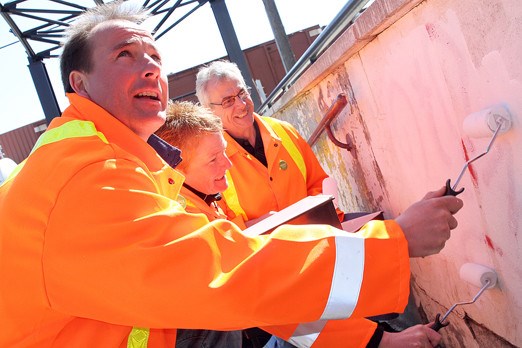The key to putting a halt to graffiti is removing it as quickly as possible.
At least that’s the view of the city’s new strategy to eliminate graffiti from public and private places, instituting a partnership with the 211 program to encourage the reporting and removal of the unwanted artwork throughout Thunder Bay.
Current River Coun. Andrew Foulds, who helped spearhead the city’s graffiti management strategy, said the one-year pilot program also includes a $10,000 fund for homeowners and business owners to access, $50 at a time, if they’re hit.
Though the problem isn’t rampant in Thunder Bay, it’s better to halt it before it does get out of hand, he said.
“We have a comprehensive strategy that is going to make a difference. We have measurable, we have standards, we are really going to take back this community, we’re going to clean it up and it’s going to be more vibrant than it is now.”
Foulds said the city is working closely with community groups and the police and are especially targeting racist and gang-related graffiti.
“We’ve got a process to get that down fast,” he said. “That kind of stuff intimidates and it promotes fear. And we don’t want that in our community … The No. 1 strategy is to get all graffiti down as quickly as possible. The research is clear that if we get it down quickly, it is a huge deterrent.”
Foulds said targeting graffiti is an issue that resonates with city residents.
“People don’t like graffiti on public property, they don’t like it on private property. It takes away from the overall vibrancy of the community and it’s not a nice thing,” said Foulds on Thursday.
The rebate subsidy, which covers up to $50, applies to homes and businesses valued at $400,000 or less.
“A full subsidy is available for low-income property owners who are seniors or have a disability and receive government support,” said Charles Campbell, the city’s acting general manager of infrastructure and operations.
Marie Klassen, director of the Lakehead Social Planning Council’s 211 program, said it was a natural fit to house the reporting program.
“Having the service that already exists, I think it’s commendable that the city recognized us as a mechanism for people to seamlessly report graffiti,” Klassen said.
“I think it being a live-voice response, 24/7, we can be called any time of day and it just makes it a lot easier for folks to do that.”
